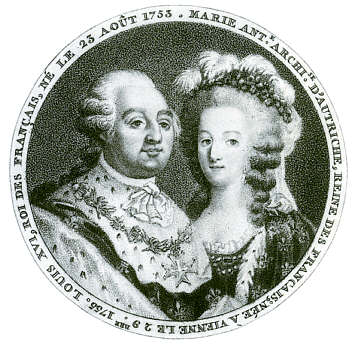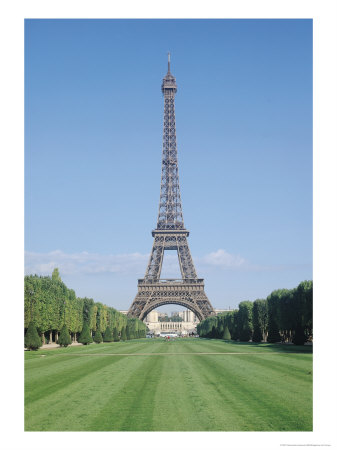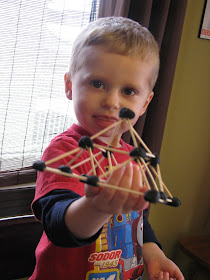 I have been meaning and meaning to do this country in our World Cultures unit for years. This year I finally did it! And I ended up coming up with more things than we were going to have time for, so I edited my lesson plan as we went and chose to do only my favourite activities.
I have been meaning and meaning to do this country in our World Cultures unit for years. This year I finally did it! And I ended up coming up with more things than we were going to have time for, so I edited my lesson plan as we went and chose to do only my favourite activities.Lesson Time:
We started out our lesson by pretending to be in airplanes and fly across the ocean. Then with the globe, I showed them how far we flew from our home in Canada, to the country of France. I took out small French flags, which they all pasted into their 'passports' that we had made at the start of our unit. Then we talked about the significance of the flag's colours. The blue was to represent the common people, and since that was the most important part of the country, it came first. The white is to represent the Catholic Clergy, which bridges the gap between the blue and the red. The red is to represent the nobility, and since the revolution they have been considered the least important part of the country, so they come last. Blue, white and red were also the colours worn by the people as they stormed the Bastille, (which is the event that marks the start of the revolution).
 I found this printable map of Europe and France. On one side of the page is the country of France all alone, and on the other side it had it in context of the continent. I had the kids choose one crayon and first colour France all on its own. Then I had them look at the European map, and see if they could find France. When they found it, they coloured it in to match the other.
I found this printable map of Europe and France. On one side of the page is the country of France all alone, and on the other side it had it in context of the continent. I had the kids choose one crayon and first colour France all on its own. Then I had them look at the European map, and see if they could find France. When they found it, they coloured it in to match the other.
We learned a few quick facts about the country: they have a very high education level, they have the highest life expectancy in the world, their health care system is rated #1 by the WHO, and it is the most visited country in the world.
Then, because I thought the kids would find this part interesting, we talked a little bit about fairy tales and how some of the most loved stories have come from France. Some examples are: Sleeping Beauty, Cinderella, Puss in Boots, Goldilocks, Little Red Riding Hood, and Beauty and the Beast. Neat, eh?
 I found this printable map of Europe and France. On one side of the page is the country of France all alone, and on the other side it had it in context of the continent. I had the kids choose one crayon and first colour France all on its own. Then I had them look at the European map, and see if they could find France. When they found it, they coloured it in to match the other.
I found this printable map of Europe and France. On one side of the page is the country of France all alone, and on the other side it had it in context of the continent. I had the kids choose one crayon and first colour France all on its own. Then I had them look at the European map, and see if they could find France. When they found it, they coloured it in to match the other.
We also talked about the most famous French warrior, Joan of Arc, Ballet, and about the last King and Queen of France.
I had also prepared a bit of English to French translation for common phrases that I thought would be fun that we could use throughout the day, such as 'please,' 'thank-you,' 'hello,' 'good-bye' etc. But by this point, I was losing them and we needed to move on. So we missed this, and a bit of weather in France and how we could say 'It is sunny, ' or 'it is snowing, ' etc.
Craft Time:
Okay, I'll admit that this was a little crazy to have done, but I was glad we did. For our craft we did paper mache.

Each child was given a balloon and a stack of paper strips with a little container of glue made from flour and water and we went to work. Some of the kids didn't want to get their hands all gooey, so they would put the paper into the glue and have their mom's pull it out and smooth it over the balloon. Others though, were totally into it and plunged right in!
Snack Time:
One of the reasons I was so excited to do France as my unit was because I couldn't wait to do the food. France has some amazing food! I kept it pretty basic though so that the kids would all eat what I served...I didn't think escargot or frog legs would go over very well!
Before I served their food, I talked about how France was famous all over the world for their food, and what kinds of things the people there ate.
 I served croissants, French bread with butter, grapes, brie, Camembert, and a little goblet of grape juice to drink. Not everyone liked the cheeses, but everything else quickly disappeared.
I served croissants, French bread with butter, grapes, brie, Camembert, and a little goblet of grape juice to drink. Not everyone liked the cheeses, but everything else quickly disappeared. After they had eaten a plate of healthy food, I pulled out a treat. Chocolate Fondue! I used my real fondue forks for an authentic touch, and put out bowls of melted chocolate. We dipped grapes, strawberries, and bananas.
After they had eaten a plate of healthy food, I pulled out a treat. Chocolate Fondue! I used my real fondue forks for an authentic touch, and put out bowls of melted chocolate. We dipped grapes, strawberries, and bananas.
I thought that I had cut up a lot of fruit and, especially given the big snack they had all just finished, that we might not get through it all. I was completely wrong. Every last lick was gone.
Science Time:

I showed a picture of the Eiffel Tower and taught about it a little. It is the most recognizable landmark in the world, according to my information. Wow. More people come to see it every year than any other attraction world-wide. Double Wow.
After a few more interesting facts, I pointed out the structure of the tower and how it was built.
 Since it was the highest man-made structure in the world for 47 years, I wanted to do a demonstration of what is important in building tall buildings. First I took some regular alphabet blocks and made the highest stack I could by stacking them one-on-top-of-each-other. It got tall, but it wasn't strong. We could knock it over with only our breath.
Since it was the highest man-made structure in the world for 47 years, I wanted to do a demonstration of what is important in building tall buildings. First I took some regular alphabet blocks and made the highest stack I could by stacking them one-on-top-of-each-other. It got tall, but it wasn't strong. We could knock it over with only our breath.So then we looked at how the tower has a big, wide base, and then it was strong enough to support the tall spire part.
Working with their moms, the kids went to work building with toothpicks and Playdoh to see what kinds of structures we could build and how they would be made strong.
 Everyone had fun building something, but most of our structures toppled down without much provocation.
Everyone had fun building something, but most of our structures toppled down without much provocation. Except this one! This mom-and-son team was the clear winner. They used triangles to increase stability while they worked their way up. It was so sturdy, he could even pick it up and carry it. Fabulous.
Except this one! This mom-and-son team was the clear winner. They used triangles to increase stability while they worked their way up. It was so sturdy, he could even pick it up and carry it. Fabulous.Singing Time:
We sang 'Frere Jacques' first in French and then the English version. This was a good song choice for the unit because it was an echo song with short phrases that the kids could repeat as I sang them. This made speaking another language much easier. Then when we did the translation, they got to find out what they were singing about.
Here are the words:
Frère Jacques, frère Jacques,
Dormez-vous? Dormez-vous?
Sonnez les matines! Sonnez les matines!
Din, dan, don. Din, dan, don.
Dormez-vous? Dormez-vous?
Sonnez les matines! Sonnez les matines!
Din, dan, don. Din, dan, don.
And the English version was:
Are you sleeping? Are you sleeping?
Brother John? Brother John?
Morning bells are ringing,
Morning bells are ringing,
Ding, dang, dong. Ding, dang, dong
I was also was prepared to sing 'Alloette,' since that is a fairly well-known French song, but in the interest of time we didn't.
At this point, it was time for us to close off our activities and sing our goodbye song so we could pick up our older kids from school, but I did have more planned. We would have also done:
Story Time:
I had these two books from the library:
Art Time:
I had printed out French Flags that we were going to colour.
Wiggle Time:
We were going to play a game of Simon Says, but instead we were going to do it in French and have it be 'Jacques Dit,' and we were going to learn the parts of the body. For example, we'd say, "Jacques Dit," (Jack Says) Move your 'jambe,' (move your leg). I would have been there to prompt the kids as they took their turns, and by modeling the action, the rest would have known what to do. I thought it would have been great, but oh well. The things we did were my favourite of the activities and were well received by our pupils, so that will have to satisfy me.


I love everything you did! It is always so fun to see what other people do with the same theme. The tiny goblet of juice is just too cute and the fondue pic shows exactly how I feel about fondue....love it!
ReplyDeleteThanks Marie. It was a fun unit. We did Canada, Mexico and then we had a St.Patrick's Day class in the midst of it and I ended with South Africa.
ReplyDelete